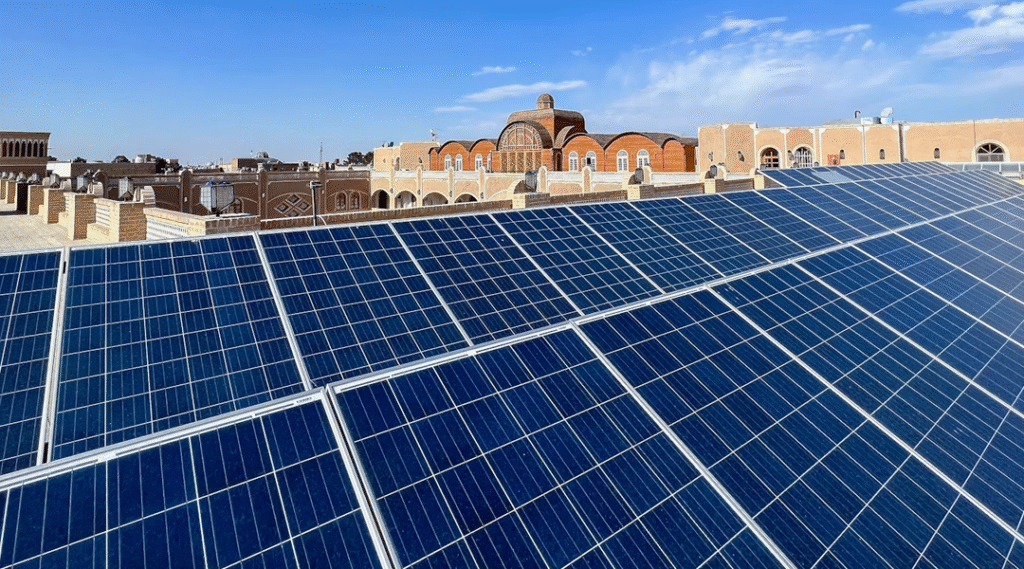The transition to a low‑carbon economy depends not only on the maturity of clean‑energy technologies but also on the policy frameworks, regulatory safeguards, and market structures that enable—or impede—their deployment. Article #8 in our clean‑energy deep‑dive series examines three critical dimensions: carbon pricing mechanisms and renewables incentives; grid codes, permitting hurdles, and interconnection processes; and the imperatives of energy equity and just‑transition strategies. Taken together, these elements determine whether renewables can scale rapidly, integrate smoothly, and deliver benefits fairly across society.
1. Carbon Pricing, Renewable Mandates, and Fiscal Incentives
Carbon Pricing
Putting a price on carbon creates an economic signal that drives investment toward low‑carbon solutions. Emissions trading systems (ETS), such as the EU’s Emissions Trading System, cap total emissions and allow allowances to trade, internalizing the social cost of carbon. Carbon taxes, by contrast, set a fixed price per tonne of CO₂ emitted. Both approaches have proven effective at steering generation portfolios, but their stringency and coverage vary widely. A well‑designed carbon price must cover all major emitters, adjust dynamically for market volatility, and include mechanisms to protect vulnerable industries from “leakage” to jurisdictions with weaker climate rules.
Renewables Mandates and Tax Credits
Renewable portfolio standards (RPS) or mandates compel utilities to source a defined share of their electricity from renewables by a certain date. These targets provide predictable market demand, encouraging developers to finance projects. Tax credits—most notably production tax credits (PTC) and investment tax credits (ITC)—directly lower the cost of building and operating renewable assets. The U.S. ITC for solar and wind, in force since the mid‑2000s, helped drive module costs down by over 90% through economies of scale. For long‑term stability, policymakers should schedule a gradual phase‑down of credits and tie them to performance metrics, such as minimum capacity factors or domestic content requirements.
2. Grid Codes, Permitting Bottlenecks, and Interconnection Queues
Grid Codes and Technical Standards
As renewable penetration rises, grid operators demand that generators adhere to strict codes governing voltage control, frequency response, and fault‑ride‑through capability. These technical standards ensure system stability but may impose additional costs on project developers, especially for inverter‑based resources like solar and battery storage. Harmonizing codes across regions—or at least across national markets—can reduce engineering complexity, lower equipment costs, and speed deployment.
Permitting Hurdles
One of the most persistent non‑technical barriers to clean‑energy deployment is permitting. From land‑use approvals to environmental impact assessments, protracted approvals can delay projects by years. Streamlining these processes—by setting statutory timelines for decision‑making, creating one‑stop permitting authorities, and digitizing application workflows—can shave significant time and uncertainty off project pipelines. Additionally, adopting “pre‑approved” zones for renewables, where environmental and community reviews are conducted proactively, can accelerate construction without compromising due diligence.
Interconnection Queues
A growing backlog of interconnection requests in many markets highlights the need for capacity planning and dynamic network upgrades. When dozens—or hundreds—of projects vie for limited grid capacity at the same nodes, developers face indefinite wait times, leading some to abandon projects or lose financing. Reforms may include first‑ready, first‑served interconnection protocols, transparent queue management dashboards, and cost‑sharing mechanisms for network upgrades that align beneficiaries and contributors.
3. Energy Equity and Just‑Transition Frameworks
Distributing Clean‑Energy Benefits
Even the most ambitious policy and market reforms can falter if their benefits accrue unevenly. Communities near mining or fossil‑fuel infrastructure have often borne disproportionate pollution burdens without sharing in the economic gains of the energy transition. Energy‑equity policies seek to ensure that low‑income households receive discounted clean‑energy services, that community‑scale projects gain priority access to incentives, and that workforce development programs train residents for new green jobs.
Protecting Workers and Regions
A just transition recognizes that phasing out coal plants or oil refineries will displace thousands of workers and destabilize regional economies. Policies must therefore include retraining programs, unemployment support, and regional economic diversification packages—ideally funded in part by carbon‑price revenues. For example, Germany’s coal‑commission process allocated over €40 billion through 2038 to support affected workers and regions, illustrating how revenue recycling can soften social impacts.
Governance and Participatory Processes
Meaningful community engagement, transparent governance structures, and clear accountability mechanisms build public trust. Whether setting tariff rates, allocating subsidies, or siting new transmission corridors, policymakers should incorporate local input early and often. Participatory decision‑making not only reduces the risk of legal challenges and protests but also often yields more innovative, locally tailored solutions.
A Balancing Act
Effective clean‑energy policy and market design is a balancing act between incentivizing rapid deployment, maintaining grid reliability, and ensuring social inclusivity. By combining robust carbon‑pricing regimes, streamlined regulatory processes, and proactive equity frameworks, governments and regulators can create the conditions for a resilient, affordable, and just clean‑energy transition. As we’ve seen in markets from California to the European Union, success hinges on aligning economic signals with technical standards and human‑centered policies—crafting a market where innovation flourishes and the benefits of decarbonization are shared by all.
All articles for this special edition-Clean Energy:
(#1) The State of the Global Clean Energy Transition
(#2) Solar Power: Illuminating the Path from Rooftops to Utility-Scale Farms
(#3) Wind Energy: Onshore, Offshore & Beyond
(#4) Harnessing the Depths and Tides: A Deep Dive into Hydro, Marine & Geothermal Energy
(#5) Bioenergy & Waste‑to‑Energy: Turning Organic Residues into Renewable Power
(#6) Energy Storage & Grid Integration: Powering the Future of Clean Energy
(#7) Economics, Financing & Business Models in the Clean‑Energy Transition
(#8) Designing the Rules: Policy, Regulation, and Market Design in the Clean‑Energy Era
(#9) Environmental & Social Impacts of the Clean‑Energy Transition
(#10) Next‑Generation Clean‑Energy Innovations & the Road Ahead
As for in-depth insight articles about AI tech, please visit our AI Tech Category here.
As for in-depth insight articles about Auto Tech, please visit our Auto Tech Category here.
As for in-depth insight articles about Smart IoT, please visit our Smart IoT Category here.
As for in-depth insight articles about Energy, please visit our Energy Category here.
If you want to save time for high-quality reading, please visit our Editors’ Pick here.



